- Home
- Penelope Lively
Oleander, Jacaranda: A Childhood Perceived Page 2
Oleander, Jacaranda: A Childhood Perceived Read online
Page 2
And there was also a response to this dramatic metamorphosis which was more detached – a perception of the battered house as an expression of a world that was utterly extinguished – the Egypt of foreign administration and also an England of assumptions that are now unthinkable. Half of me was preoccupied with a contorted nostalgia; the other half was asking questions about the landscape of resurrection all around, the rubble and the concrete-mixers. How does Cairo sustain such a population? What do people do? How do the fellaheen live today?
I don’t know how old I was on the day of the drive to Heliopolis. Probably six or seven. I was born in Cairo, and when I was two we moved from the flat in Zamalek to Bulaq Dakhrur – my parents, myself and Lucy, who had looked after me since I was six months old. I was an only child, and as I grew Lucy was the centre of my existence, my surrogate mother. My parents were peripheral figures of whom I did not see a great deal, for whom I felt an interested regard but no intense commitment. The continuous points of reference through all these glimmering fragments of that time are a person and a place – Lucy’s firm presence, and the equally indestructible backcloth – the sharp precision of the house and the garden with beyond them the fields and the canals, the people, the animals, the feathery palms, the tall rustling sugar-cane, and, further yet, the maelstrom of Cairo, with its trams and gharries and grid-locked lines of donkey-carts, the minarets against the blue sky and the wide brown river. I had known nowhere else; it was absolutely familiar and absolutely reassuring.
I am walking with Lucy beside the canal. This is one of our regular afternoon walks, a favourite with me because halfway along the canal there is a mimosa tree, from which Lucy allows me to pick a sprig. I bury my nose in the powdery yellow balls, guzzling that strange, fragile smell. Further along there is a place where children from the village bathe in the canal, stark naked, hurling themselves from an overhanging branch, throwing up great plumes of foaming brown water. And there am I in my cotton dress, my sun-hat, my lace-up shoes and my socks: I stare at them with fascination and with envy. Further yet, though, there is a potential hazard. Sometimes there is a gamoose – a water buffalo – tethered under a particular tree. I am scared of gamooses: they are enormous and they glare at you with sunken eyes, swinging their heads from side to side. Moreover, they are said to be maddened by the smell of Europeans. I creep past this gamoose on the far side of the track, heart thumping, trying to be odourless, eyeing its horns and the frayed rope tether.
The expectation of life in rural Egypt then was around forty. Infant mortality was high. My stare of envy was also one of absolute ignorance. The canals, the lifeblood of the agricultural landscape, were also open sewers, used for washing clothes and cooking-utensils, for watering animals, for urinating and defecating, for drinking. They were the habitat of the snails which harboured bilharzia, the deadly debilitating disease of the Egyptian fellaheen. Many of those children would have had trachoma, the eye complaint which causes blindness. Only a small proportion of them received primary education.
I knew about poverty. It was visible on all sides – on the gaunt visages of old men, on the fly-ridden faces of babies, in the skinny animals, the rags and tatters, the glimpses through the doors of village hovels. People begged – everywhere, all the time. Conjuring it all up today, I see what I now know – I see the infant mortality figures and the catalogue of disease and the system of economic oppression. Then, I saw simply what I had always seen, with the impervious accepting eye of childhood. This was the world. How could it be otherwise?
It was a landscape that was bright green and grey-green and tawny. The fields of berseem were brilliant emerald dappled with white clover flowers, the sugarcane was grey-green ripening to golden and the palms were grey-green and so were the eucalyptus trees and the casuarinas that lined the canals. The dusty paths that criss-crossed the fields were tawny, as were the village huts. It was also a landscape of perpetual motion – the waving palms and the rippling crops and the endless pilgrimages of animals and of people. It teemed with life – the processions of donkeys so laden with berseem or cane that they were simply four titupping legs topped by a green mound, the long columns of camels, the flocks of goats. Each field was populous – busy with stooping figures, galabiyas tucked up between their legs as they worked: men, women, children. When I came to England I was perplexed by the empty Somerset countryside. Where was everybody? And now it is in medieval painting that I find the Egyptian landscape of the 1940s – in Brueghel above all. There it is again – the scene of a peasant society, the agricultural economy of intensive labour.
In the midst of this we walked, Lucy and I, for exercise and for occupation – the only people there who knew the meaning of leisure. Attracting attention – naturally enough. Children trailed after us, clamouring for baksheesh. Everyone noted our passage. I do not remember overt hostility – though I cannot see why not, now, knowing what I know. It was the animals I feared – the pi-dogs hurtling from behind a wall, barking blue murder. The dreaded gamooses.
The whole place smelt – of dust and dung. A not unpleasant smell – rich and organic and so deeply familiar that it was intrinsic, an element like the heat and the noise of invisible insects. Camel dung and donkey dung and the dark green liquid pools left by the gamooses which spattered every path. And outside the village huts sat the women and the girls making fuel out of dung and straw, up to their elbows in it, slapping the flat pancakes from hand to hand and piling them up into the great mounds that stood outside every door. They watched us as we passed, patently discussing us. Sometimes there would be a gust of ribald laughter. ‘Sa’eeda,’ we said. ‘Sa’eeda,’ they replied. ‘Sa’eeda, Sa’eeda.’ ‘Baksheesh,’ clamoured the children. The babies crawled in the dust, their faces black with flies.
Our European enclave of the three substantial, garden-encircled houses sat in the landscape like some incongruous island, lapped on all sides by ‘the cultivation’, as we called it. The daily walks with Lucy are merged now into one single acute recollection, in which the whole thing hangs suspended in vibrant detail – the mimosa and the naked leaping children and the grey mud-caked threatening spectres of the gamooses. The pink and blue and lime green of children’s clothes, the white of galabiyas, the black humps of squatting women. The soft flop of a camel’s foot on the dusty path; the felt-shod tapping of a donkey. All of it was both mundane and arresting. I saw it, received it, and did not query.
One occasion only projects from this bland acceptance. We were visited by a relative who was in the colonial service, a District Commissioner from the Sudan. Bored stiff by the polite social whirl laid on by my mother, I suspect, he headed one day for the cultivation. Eluding Lucy, I trailed after him, fascinated by this forthright, knowledgeable figure. To my surprise and alarm he made straight for the village, instead of the picturesque canal walk. Surely we were not going there? One skirted villages, normally: the smells, the pi-dogs, the droves of begging children. But my relative strode into the very centre of the place, scattering dogs with a few well-aimed stones, patting the heads of children, throwing out greetings in all directions, volleys of Arabic which brought the women to their doors and the men from the coffee-house. Within minutes we were ushered towards someone’s mud hut. I was by now silent with amazement. Could we be going inside? Such was my indoctrination about dirt and disease that I assumed I should drop dead instantly. Entranced and horrified I edged gingerly behind him into the hot gloom of the interior and tried to squat like everyone else, keeping warily in the lee of my by now awesome relative. He was already firing questions at the family, in the firm tradition of benevolent paternalism. How many children? How many wives? Cattle, goats? How much land? What crops? Current price of sugar-cane? He yanked a small child towards him, tutted over an infected eye, rapped out instructions. A platter of unleavened bread was produced and offered – those flat loaves cooked on open ovens in the village street. My relative helped himself to a chunk and sat absently chewing while he continued to shoot
questions and receive the lengthy replies. I gazed intently: he would keel over now, for sure, dead as they come. But no, he continued to squat there in rude health, knees jutting up from his khaki shorts, making jokes, if you please. Our host was doubled up with laughter, the women clutched black veils to their mouths, convulsed with genteel mirth. Only the children shared my appalled fascination at this unprecedented scene. They clustered in a corner, infants occasionally crawling out from the huddle to be batted back by an adult hand. We eyed each other, poles apart but eerily attuned.
There is a touch of embellishment here, I have to admit. I cannot have known what it was he said to those people – I did not understand Arabic well enough. The land and the crops and the price of sugar-cane I supply with the wisdoms of today, but the general tenor of it all was clear enough to me back then, along with the eccentricity of the whole occasion and the unsettling observation that it was eccentric to me but not at all so to him, which threw a disturbing light on my assumptions.
I think that by then I was about nine. I find the episode intriguing because I can recover my own feelings of bewilderment and disorientation, and because I can now see objectively that it seems to be an instance of a child becoming aware of the existence of other viewpoints – an erosion of the egocentric vision of childhood. And the whole thing is complicated by the further dimension of cultural assumptions. I saw that peasant family with a new clarity, both stepping aside from my own customary viewpoint and shedding for an instant the obscuring wisdoms of the adults I knew: Lucy, my parents, their friends. I saw that there is more than one way of looking at the world, and was startled.
The analysis and discussion of childhood development is disappointingly deficient when it comes to an examination of the way in which children cope with the intricacies of social and cultural life. I can see why. It is hard if not impossible to quantify in accordance with scientific method. You can set up experiments and ask questions and analyse the answers but somewhere along the way you have lost entirely the mercurial quality of the actual process – the extraordinary way in which children learn to negotiate the jungle in which they find themselves, and the parallel achievement whereby they discover that theirs is not the only negotiation – that experience is universal, and that it is expedient to discover how others experience. The investigation of the nature of children’s egocentric vision centres on their conquest of the physical world – the way in which babies learn that an object or a person continues to exist when out of sight, the way in which small children are – or are not – able to conceive of a different viewpoint in the most basic sense. If you ask a child to position a model figure behind a model wall so that it could not be seen by a putative person on the opposite side of the table, can it do so? The answer seems to be – yes, rather better than has been previously believed. The stern Piagetian credo of the unfaltering egocentric vision has been considerably modified. Small children are more flexible than we thought.
But what interests me most is what happens around and beyond this basic diagnosis of perception. How do children arrive at an alternative interpretation of things, and what happens to them on the way? And this is where developmental psychology begins to give up, it seems to me – for good reason. But we all go through this process of discovery – unless dangerously warped. The answers are there inside the head, if only they could be called up. It is as though there were a raft of submerged material from which there floats up from time to time some perfect fragment – a shining morsel of experience whose brilliance makes all the more tantalizing that unavailable mass. And the shining fragments, you come to realize, are there because, once retrieved, the mind makes sure to keep them untarnished. You take them out and look them over, to keep them in good condition. But down there are many more – apparently unreachable through any deliberate process of retrieval. Just occasionally, something new shakes free and comes gleaming to the surface, and you recognize it, surprised. Of course – that was always there. And yet it wasn’t.
Every child has to cope with the confusing codes of its own society – beginning with the family and working outwards. Every child is confronted with the puzzle of class distinctions. My particular challenge was that I was growing up in accordance with the teachings of one culture but surrounded by all the signals of another. Egypt was my home, and all that I knew, but I realized that in some perverse way I was not truly a part of it.
We were English. I was English – that much I knew, deep in my being. It was of central importance – you were never allowed to forget that – but what it meant I could not possibly have said. I had been to England briefly for summer visits, before the outbreak of war made this impossible. I remembered little of it, except a windy Cornish beach and my grandmother’s flower-filled garden. More interesting and memorable were the long sea trips there and back – the rusty saltwater baths and the creaking cabins and the ranks of rug-wrapped figures in deck chairs. So far as I was concerned England was a place a long way away which was nothing much to do with me, except that in some mysterious and solemn way it was, and don’t you forget it.
I was conditioned partly by my parents and the society in which we lived, but most of all by Lucy. Lucy’s patriotism was absolute and implacable. There was English, and there was other. To be English was to be among the chosen and saved; to be other was simply to be other. There were gradations of other. American or Australian was other but within shouting distance, as it were. French, Italian, Greek were becoming unreachable, everything else was outer space. Within this unrelenting xenophobia there was a stern creed of tolerance and respect for alien practices, especially religious practice. I knew that it was offensive to stare when Muslims were at prayer, that mosques must be entered with the same reverence as Cairo’s Church of England cathedral. The world of other was different, and hence of no great interest, but you accorded it a perfect right to carry on as it did.
My parents’ views are more indistinct, but were certainly a tempered form of Lucy’s, and reflected those of the society from which they sprang. Their friends were mainly English, invigorated here and there by an infusion of cosmopolitan Cairo. They were perhaps less single-mindedly patriotic than Lucy, and more overtly curious about Egypt, but then so they should have been – they had the advantage of education and, in my mother’s case, of unlimited leisure. Their concerns roved wider, but they too left me in no doubt that we were all of us in some mysterious way hitched up to this distant and inconceivable place of which I knew so little.
England was pink. I knew that from Bartholomew’s atlas. Pink was good. And there was plenty of it, too, a global rash; lots of the rest of Africa, and India slung there like a pear, and New Zealand and Australia and Canada and much else. I learned history from a book called Our Island Story, much approved by Lucy. It had glossy romantic pictures of national heroes, with potted accounts of the finer moments of the nation’s rise to pink glory. Boadicea and King Arthur and Sir Walter Raleigh and Kitchener and Queen Victoria all somehow rolled into one to produce essence of Englishness. The atlas reinforced this triumphant digest of the Whig interpretation of history. Up there at the top is brave little England. Britannia rules the waves. Goodbye Piccadilly, farewell Leicester Square. This sceptred isle. John Bull. The white cliffs of Dover. I imbibed it all with a whisper of unease: did I truly have a claim to all this?
I look back in dismay. There has been a lot of unlearning to do. And can it all be unlearned? Is there perhaps deep within me some unreconstructed layer which believes pink is best and that it has been uphill all the way from brave Boadicea to good Lord Kitchener?
Egypt was not pink but diagonally striped with pink – a worrying ambiguity. If anybody had ever stopped to explain to me why exactly the British were in Egypt, in such numbers and with such authority – why indeed we ourselves were there – the explanation had not sunk in. I saw cosmopolitan, polyglot Cairo. I recognized differences and distinctions – the poverty of the fellaheen, the luxury and flamboyance of shops and cafés, th
e varying rituals of the place from the muezzin’s call to the social exchanges of Gezira Sporting Club or Shepheard’s Hotel, and perceived it all as an immutable state of affairs, requiring observation but no explanation. I noted with beady eyes, as any child does. The notes taken are with me still; now, I can interpret them.
Those confusing stripes indicated a Protectorate, of course, and the atlas was out of date anyway because by then the country had been accorded an ambivalent form of independence whereby Britain retained control over defence, foreign policy and security of communications, and foreign nationals remained subject to their own, rather than Egyptian, law. It was not independence at all, as Egyptians were well aware, and throughout the 1930s and 1940s the dispute continued between the nationalist movement and the British government until eventually full independence was achieved in 1952 after the revolution and the departure of King Farouk. But in my childhood the country was still dominated by a foreign superstructure. In 1937 there were 31,000 British in Egypt, as well as 18,000 French, 47,000 Italians and 68,000 Greeks. Along with plentiful communities of Maltese, Lebanese, Syrians and, of course, the Turks who had been running the place in one form or another since Mameluke times. Egypt had a king (the former line of khedives had been indulgently turned into a hereditary monarchy with King Fouad, Farouk’s father), a democratically elected government and a prime minister, but it was still effectively run by foreigners, and principally by the British. It was a Muslim society whose population spoke Arabic, whose king was of Turkish descent, and which was superficially European. The architecture of modern Cairo – by which I mean nineteenth-century Cairo, most of it now demolished, more’s the pity – was French: the elegant apartment blocks with their balconies and tall shuttered windows, the Haussmann-style boulevards. The shops were likely to be owned and staffed by Greeks, Lebanese or Italians. The public works were constructed and administered by French, Germans, British. Government offices were manned by Egyptians, but behind every Egyptian stood a British official.

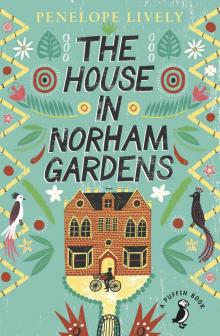 The House in Norham Gardens
The House in Norham Gardens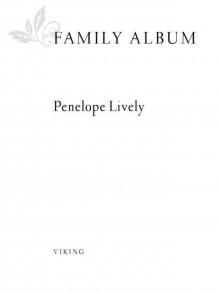 Family Album
Family Album Life in the Garden
Life in the Garden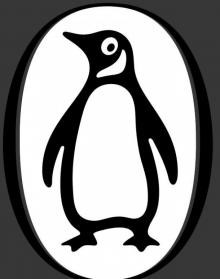 Oleander, Jacaranda: A Childhood Perceived
Oleander, Jacaranda: A Childhood Perceived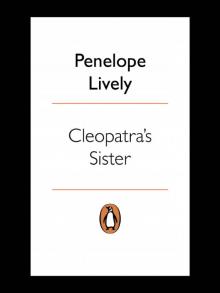 Cleopatra's Sister
Cleopatra's Sister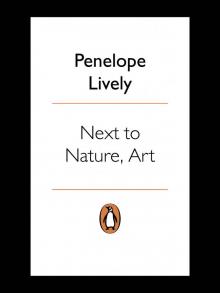 Next to Nature, Art
Next to Nature, Art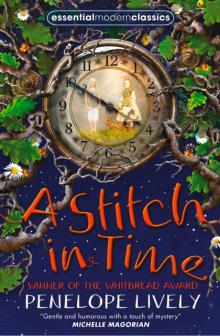 A Stitch in Time
A Stitch in Time Moon Tiger
Moon Tiger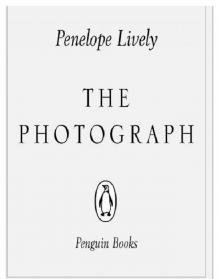 The Photograph
The Photograph Heat Wave
Heat Wave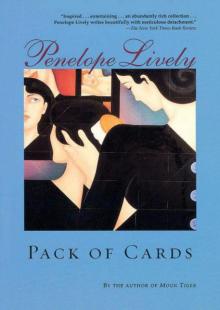 Pack of Cards
Pack of Cards Spiderweb
Spiderweb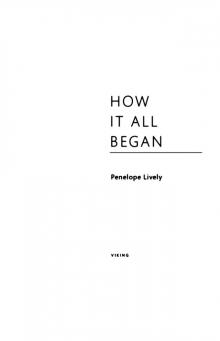 How It All Began
How It All Began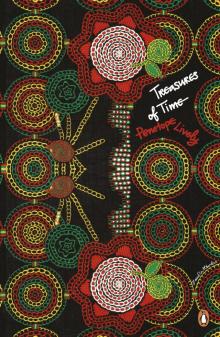 Treasures of Time
Treasures of Time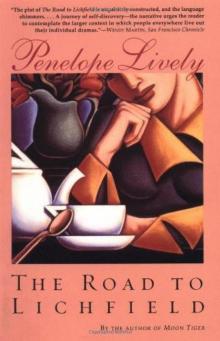 The Road to Lichfield
The Road to Lichfield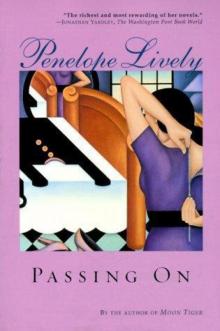 Passing On
Passing On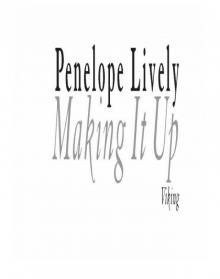 Making It Up
Making It Up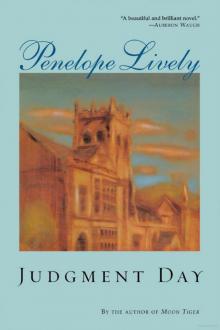 Judgment Day
Judgment Day The Purple Swamp Hen and Other Stories
The Purple Swamp Hen and Other Stories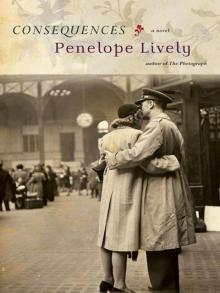 Consequences
Consequences *****Passing On*****
*****Passing On*****